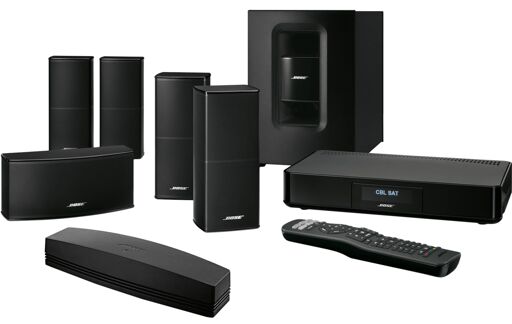#hackaday
😎
LINK: https://thunderowl.one?project=aiwa
I love when people do projects like this:
https://hackaday.com/2025/09/22/full-scale-styrofoam-delorean-finally-takes-flight/
Repórter Retro 119
https://retropolis.com.br/2025/10/22/reporter-retro-119/
#ReprterRetro #8BitGuy #AcessoRemoto #AdrianBlack #AMD #AppleII #Arcade #Archie #ArsTechnica #AtariPortfolio #AtariSt #Brasil #ByteMagazine #Commodore128 #CP400 #CP500 #Cyberdeck #DartmouthCollege #DEC #DiegoRetroGames #Embratel #epcom #expert #ExplainingComputers #FeiraInternacionalDeInformtica #fliperama #FranklinAce #gradiente #Hackaday #Homebrew #hotbit #IBM #IBM5100Portable #internet #Laptop #Linux #MesopGames

Este é o Repórter Retro 119, produzido pela A.R.N.O. (Agência Retropolitana de Notícias)! MP3 para ouvir offline Escute no YouTube Do que falamos? 35 anos do primeiro buscador de Internet (e não, não foi o AltaVista nem o Yahoo!) Acredite, acharam um dump dos dados dele e botaram pra rodar! 40 anos do Network Time
#Hackaday got the point 😜 Their article on my process of etching fine probe tips:
https://hackaday.com/2025/10/13/etching-atomically-fine-needle-points/
Bose SoundTouch Smart WiFi Speakers are about to go Dumb

[https://hackaday.com/wp-content/uploads/2025/10/bose_738377_1100_soundtouch_520_home_theater_1180253-916654800_cropped.jpg?w=800] Bose SoundTouch speakers were introduced in 2013, offering the ability to connect to online streaming services and play back audio on multiple speakers simultaneously using the accompanying mobile app. Now these features are about to be removed, including the mobile app, as Bose is set to discontinue support [https://www.bose.com/soundtouch-end-of-life] on February 18, 2026. From that point onwards, you can only use them via Bluetooth or physical connectors that may be present, like an audio jack or HDMI port. This includes fancy home theater system hardware like the above SoundTouch 520. That is the official line, at least. We have seen the SoundTouch on Hackaday previously, when it was discovered how to gain root shell access [https://hackaday.com/2014/09/30/finding-a-shell-in-a-bose-soundtouch/] to the Linux OS that powers the original SoundTouch system with Telnet access on port 17,000 to pass the listening service the remote_services on command before connecting with Telnet as usual, with root and no password. A quick glance at the comments to that post suggests that this is still a valid approach for at least certain SoundTouch devices. The fallout from this announcement appears to be twofold: most of all that ‘smart’ features like WiFi-based streaming can be dropped at any time. But it also makes us realize that hardware hackers like us will never run out of new and suddenly obsolete hardware that need our rescue. — From Blog – Hackaday [https://hackaday.com/] via this RSS feed [https://hackaday.com/blog/feed/]
A New Cartridge For An Old Computer — #Hackaday
Perhaps most famously, the #Commodore VIC-20 and #Commodore64 had cartridge slots for both gaming and other software packages. As part of the Chip Hall of Fame created by #IEEE Spectrum, [James] found himself building a Commodore cartridge more than three decades after last working in front of one of these computers.
https://hackaday.com/2025/10/06/a-new-cartridge-for-an-old-computer/
[SEC] Building The DVD Logo Screensaver With LEGO
This whole build is amazing, but the 20:26 mark really brings it home.

Google Japan Turn Out Another Keyboard, and it’s a Dial

[https://hackaday.com/wp-content/uploads/2025/10/dial-board-featured.jpg?w=800] There’s a joke that does the rounds, about a teenager being given a dial phone and being unable to make head nor tail of it. Whether or not it’s true, we’re guessing that the same teen might be just a stumped by this year’s keyboard oddity from Google Japan [https://github.com/google/mozc-devices/tree/main/mozc-dial]. It replaces keys with a series of dials that work in the same way as the telephone dial of old. Could you dial your way through typing? All the files to make the board, as well as a build guide, are in the GitHub repository linked above, but they’ve also released a promotional video that we’ve put below the break. The dials use 3D printed parts, and a rotary encoder to detect the key in question. We remember from back in the day how there were speed dialing techniques with dial phones, something we’ve probably by now lost the muscle memory for. We like this board for its quirkiness, and while it might become a little tedious to type a Hackaday piece on it, there might be some entertainment for old-timers in watching the youngsters figuring it out. If you’re hungry for more, we’ve covered them before [https://hackaday.com/2023/10/07/hats-off-to-another-weird-keyboard-from-google-japan/]. Thanks [ikeji] for the tip. — From Blog – Hackaday [https://hackaday.com/] via this RSS feed [https://hackaday.com/blog/feed/]